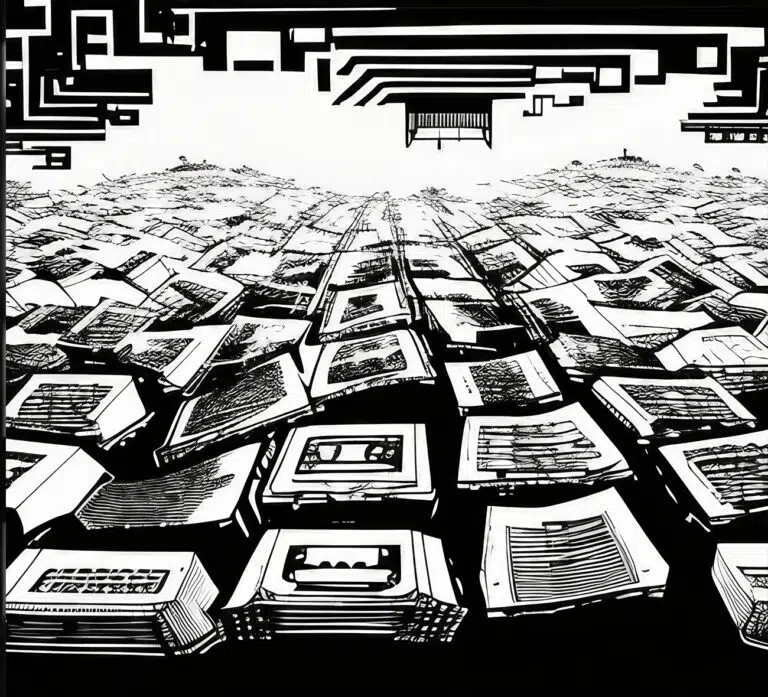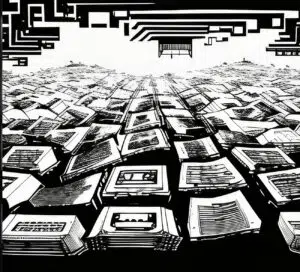Ready to dive into another twist in the NFT journey? So far, we’ve already explored how NFTs can embody the ownership of digital and real-world assets, unlocking innovative uses with blockchain technology. And here is the twist. For most of the time, we’ve been chatting about tangible stuff — items, properties, art pieces, and you name it. So, what happens when we apply this concept to something more abstract, like contracts? Today, we are talking about insurance contracts — those crucial agreements that promise financial support when unexpected events occur. Could we transform these contracts into NFTs, making the insurance world more efficient and responsive? Let’s begin!
What is insurance?
So, what exactly is insurance? In essence, it’s a financial shield that protects you when life takes a left turn, typically in the form of health, critical illness, or fire coverage. Picture it like this: you’re spending a small sum now, like buying a ticket to a future safety net. If misfortune strikes, your insurance covers a portion or even all the costs involved. This could be medical bills for a sudden illness, the expense of repairing your home after a fire, or payouts for various other unforeseen circumstances. Beyond these more familiar types, some unique insurances are also out there. Ever heard of celebrities insuring their body parts? Insurance can cover some pretty unconventional risks, from a singer’s vocal cords to a footballer’s feet. So, you see, insurance is a flexible friend that can cater to conventional and out-of-the-box needs, ensuring you’re financially covered no matter what comes your way.
Pain Points of Current Insurance Practices
1. Raising Cost of Operations
Even though insurance is a lifesaver in many scenarios, it’s not all roses and rainbows when it comes to its operations. There’s a lot of manual work behind the scenes, popular user journeys like customer onboarding, policy renewal, and, most importantly, claiming. Imagine a crew of people toiling away, processing papers, answering phones, and double-checking policies. Don’t get me wrong, the hard work is admirable, but all this manual effort bumps up operational costs significantly. And worse, it can also slow down the whole process. Some people might need that money ASAP. And, unfortunately, all this inefficiency adds to the price you pay for your insurance.
2. The complexity of Policies and Coverage Options
The complex nature of insurance policies often poses a considerable challenge for many customers. Trying to decipher the terms and conditions, let alone understand the many coverage options available, can feel overwhelming. Imagine purchasing a product without really understanding what it does or how it works — not the best feeling, right?
Adding to this complexity is a perceived lack of transparency within the industry. Some customers harbor skepticism towards insurance companies, fueled by a belief that these institutions aren’t entirely open about their policies and practices. This can cultivate an environment of mistrust and apprehension.
3. Technology Advancement
Customers adapt to technological advancements faster than ever, and their expectations are skyrocketing. But the insurance industry seems to be a step behind, struggling to keep up with this fast-paced evolution. Yes, we’ve seen digital insurance applications popping up here and there, but let’s be honest: most of these are just digitized versions of paper forms — it’s like putting an old wine into a new bottle.
4. Increasing Competition
As the insurance landscape expands, it’s seeing an influx of new competitors, many of whom are harnessing the power of the internet to offer their services. This rapidly changing environment is not only fueling competition based on price, but it’s also prompting insurers to reach into new geographical markets and develop innovative products. Faced with this rivalry, traditional insurance providers must provide added value through unique incentives, improved customer experience, and enhanced services.
What is the advantage of insurance in the form of NFT?
1. Convenience, Reduced Cost, and Procedures
Picture this: instead of the tedious process of dealing with brokers, filling out paperwork, and waiting on hold, you could secure your insurance policy in just a few clicks. Is it a far-off dream? But this dream could become a reality with the power of NFTs and blockchain technology.
Remember those pains we talked about earlier? Long onboarding processes, renewals, claims… all these processes seem to move at a snail’s pace? Well, NFTs could revamp them entirely. Instead of having a broker manage all these tasks, what if you could take control and do it all directly from your device?
In the new age of NFT Insurance, potential policyholders could simply ‘Mint’ their insurance policy from their phone or computer. They select their plans, choose their coverage, and — they’re insured. And when it comes time to make a claim? Benefits are issued seamlessly when the smart contract terms are met — no middlemen are required.
Imagine the impact of such convenience and efficiency. And also a much lower price as these costs are saved. People would feel more inclined to secure the protection they need, knowing it’s hassle-free and straightforward.
2. Transparency, safety, and immutability
So, we’ve all been there — squinting at tiny text, drowning in a sea of terms, wondering if we truly comprehend the insurance policy we’ve signed up for. But what if this confusion could be eliminated and replaced by crystal-clear transparency?
When insurance policies are transformed into smart contracts in the form of NFTs, every single detail — every clause, every condition — is clearly laid out in the contract’s code. It’s all there, in black and white, for anyone to review, scrutinize, and audit. Thus, the issuing company cannot hide secret details, as what they can see is what we can see.
And the best part? This transparency isn’t fleeting; it’s enduring. Thanks to the power of blockchain, insurance issuers can’t just alter the policy terms on a whim. The terms are immutable — they can’t be changed without the policyholder’s permission. As the policyholder, this means you have complete control over your policy. Any changes, any updates need your go-ahead. Not only does this safeguard your rights, but it also provides an accurate, immutable record of all transactions.
3. Dynamic, Responsive, and Visual
Wouldn’t it be wonderful if our policies were more than static, flat pieces of paper in insurance? What if these contracts could be vibrant, living entities that reacted to the real-world conditions of the assets they protect? NFTs are capable of bringing this to life.
As an NFT, an insurance policy would be encoded with logic and able to self-operate in the vast expanse of the internet. This means it can be responsive and dynamic, continually adjusting to mirror the actual condition of the assets it protects. Picture a car insurance policy that could adapt in real-time to reflect your vehicle’s condition. Or a health insurance policy that adjusts according to your health updates.
But the real magic happens when these NFT insurance policies are visualized. NFTs are digital natives, born and bred in the virtual world, uniquely suited for a more engaging visual representation. Imagine looking at your health insurance NFT on your personal dashboard, with its green color symbolizing it’s active and ready to support you. This virtual representation evolves as time passes, reflecting its value and status. You may have been claim-free for three years and have accumulated monetary value on your policy. The NFT updates dynamically to reflect this.
Insurance should be more than just a begrudgingly-paid bill or an inconvenient claim procedure. It should reassure us. It should protect us. With NFTs, insurance can become a tangible, dynamic symbol of protection, making us feel our money is well spent.
4. Technology Ready for Interoperability and Implications
One of the often-overlooked aspects of transforming insurance into NFT form is the standardization this introduces across the entire industry. Traditional insurance policies are often hard to compare due to varying formats, terminologies, and claims conditions set by different insurers. Adopting NFTs regulated under a common standard provides a unified structure that can make comparing policies easier for customers. Just like ERC-721 and ERC-1155, mostly for art or collectible NFTs, insurance might have its own standard in the future.
However, this standardization isn’t just about comparison — it opens up a world of interoperability. Have you ever imagined being able to collateralize your insurance policy to make the most of your funds? Or linking your insurance policy to an oracle for real-time updates, eliminating the need for third-party involvement? Or even bundling your property’s fire insurance as a transferable asset when selling, potentially increasing the property’s value?
These possibilities are closer to reality with NFTs. The NFT structure paves the way for insurance to interact with other applications, akin to APIs in software development. This lends insurance policies versatility and adaptability previously unimagined, enabling them to fit seamlessly into the expanding virtual world.
Possible Future
Envision a future where all our digital assets — from collectibles and cryptocurrencies to virtual real estate — are secured with insurance as effortlessly as clicking a few buttons. With the evolution of insurance into NFT form, we foresee a future where users can simply open a dashboard displaying their digital assets, click on the control panel of a particular NFT, select the desired protection, and mint an insurance contract. Coverage, benefits, conditions, and price could be personalized to your preference.
But this innovative approach doesn’t just benefit the individual. Businesses could also capitalize on this advancement. Remember how we often buy Apple Care alongside our new iPhones? Now, imagine if the insurance was pre-purchased and attached to the iPhone as an NFT. It would automatically activate upon purchase, streamlining the process for the consumer. Even if you were to sell your iPhone in the secondary market, the buyer could easily verify the status of the attached insurance, adding value to the transaction.
In this not-so-distant future, the concept of protection becomes infinitely more flexible, user-friendly, and seamless, extending beyond traditional notions of what can be insured. This is the new expectation for securing and safeguarding our virtual assets. This is not just an innovative breakthrough — it’s an evolutionary leap toward a more secure digital world.






